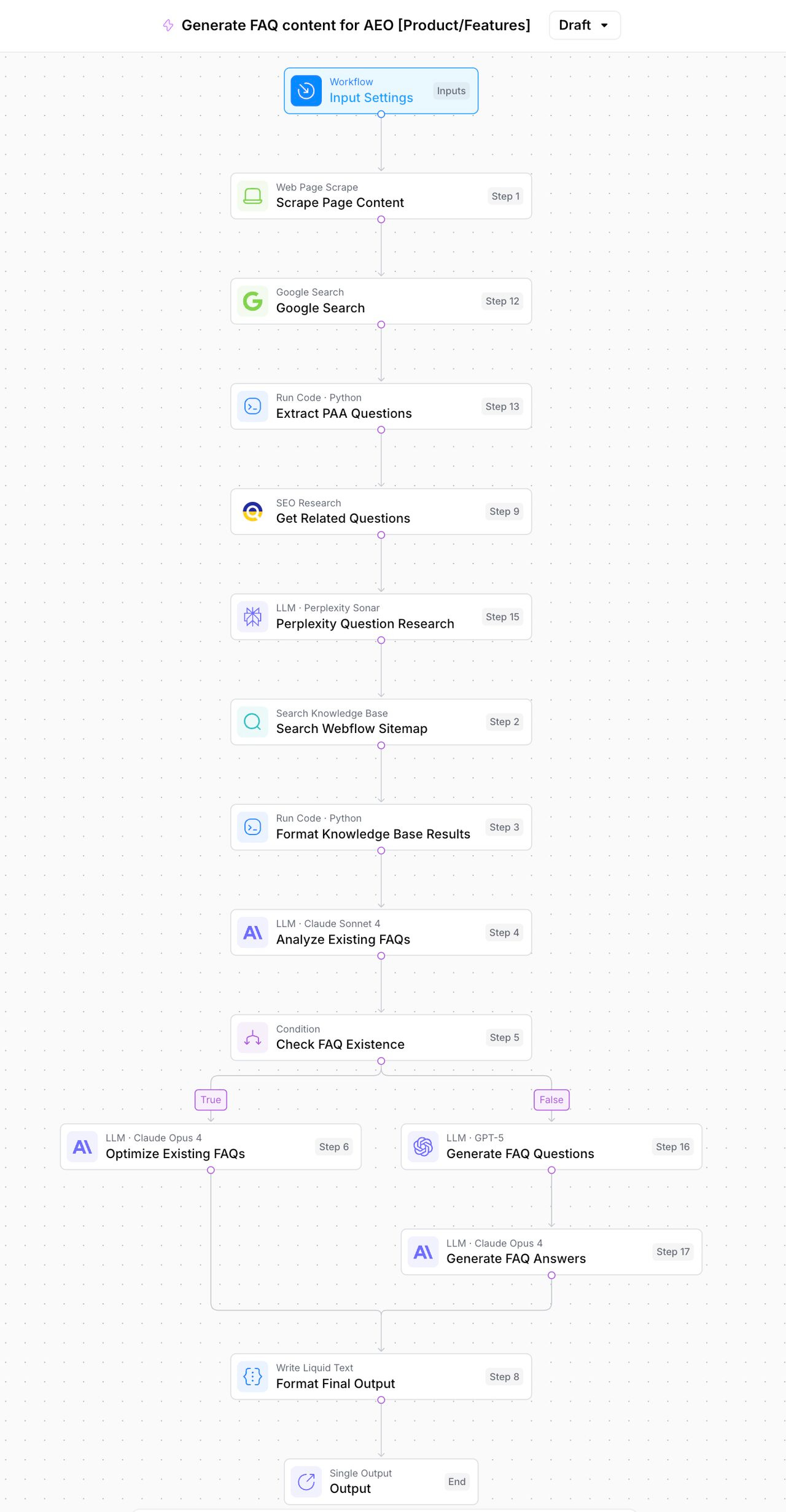⚡ How one small experiment drove a +24% lift in SEO impressions and +331 new AI citations at Webflow (steal this)
Completely white-hat SEO/AEO moves that hit like black-hat hacks
Last month, we launched a simple experiment and saw big results.
I’ve seen a lot of AI / AEO / AI search fluff on LinkedIn this week — so I’m doubling down on building in the wild, sharing actionable things you can actually implement and see results from.
Here’s what worked 👇
🧩 We added a sick FAQs + schema markup automation to six of our core feature pages — Design, CMS, SEO, Shared Libraries, Interactions, and Hosting.
No hype.
No AI buzzwords.
Just structured answers to real questions people actually ask.
📈 The results:
+331 new citations (57% of all new ones across Webflow.com)
+149K SEO impressions (+24% vs. previous period)
Visibility up across nearly every tracked query
🧠 Built in AirOps, this AI-driven workflow used Perplexity to deep research Google’s “People Also Ask” results, Reddit, Inc. niche subreddits, and other forums, uncovering what questions users are actually asking in our industry and about our product.
From there, it:
1️⃣ Analyzed existing FAQ content and identified gaps
2️⃣ Generated a final list of relevant, high-intent questions
3️⃣ Created new on-brand, product-specific answers for each one,
4️⃣ Automatically structured everything into clean schema markup
It’s simple, really: use data on the questions people are actually researching —
and create content that answers them clearly,
so your brand surfaces more in both answer engines and search engines.
The +24% lift came from making our FAQ pages more relevant and answering what people were actually asking and structuring it so search and AI engines could surface it with precision.
AI didn’t rewrite the rules here, it just raised the bar for clarity, structure, and relevancy.
Oh, and it’s a cool way to actually understand what people are asking...and what they want to hear.
That’s the playbook.



